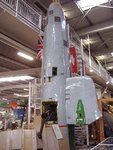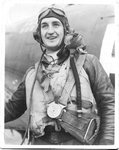They were mentioned earlier.
The Natter never saw service and the only major strike using Ohkas was intercepted by Hellcats, most of the Betty mother ships jettisoned their loads to evade destruction.
If I remember there were at least 2 successful Ohka attacks, one of them sank a USN destroyer - the Ohka cut it in half!
The Natter saw no service and only one manned flight (in a Ba-349 M-23) which killed the test pilot Lothar Sieber on 1st March 1945 and it was removed from the test program after the 20th of March.



